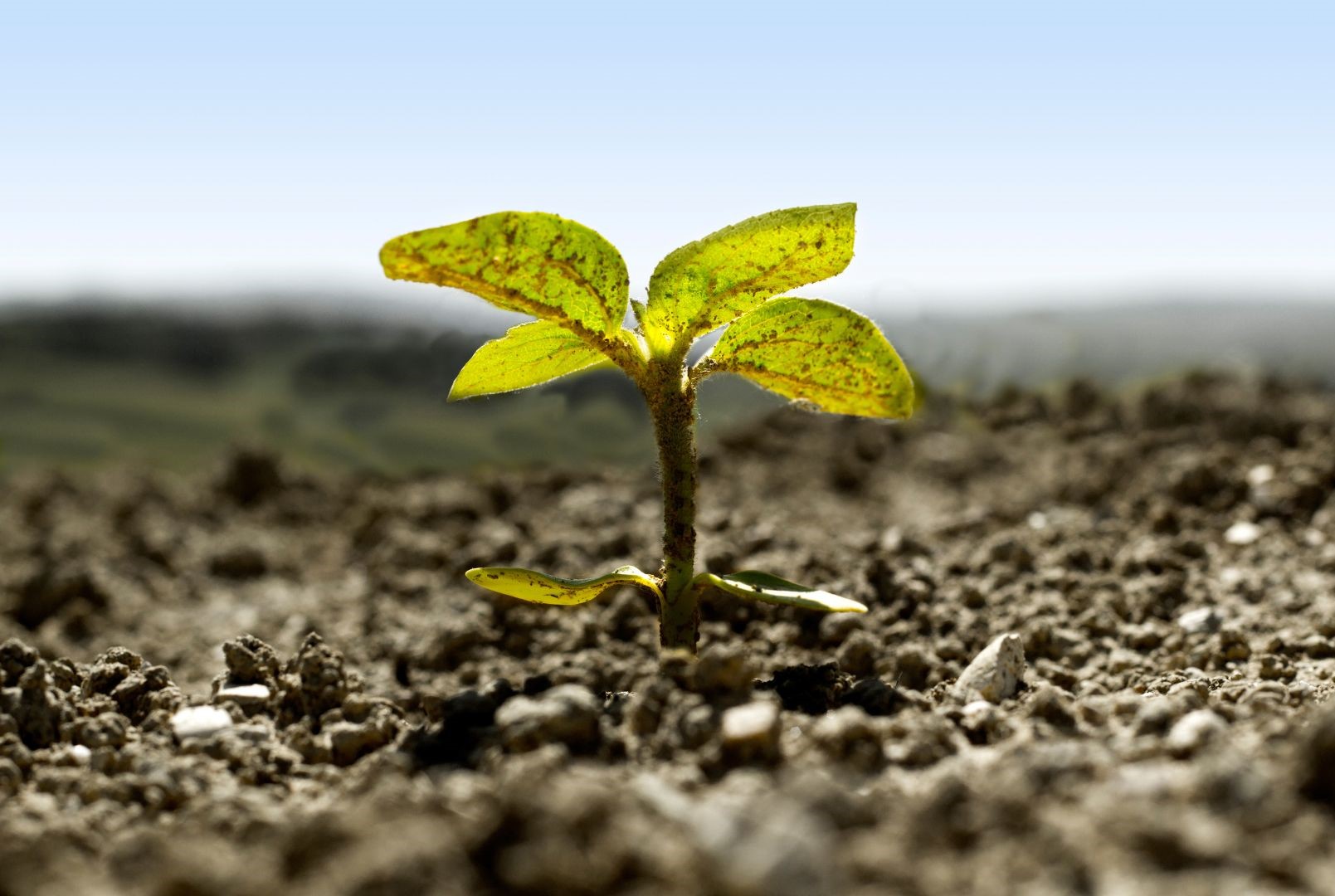Advancing Agricultural Sustainability: Exploring the Potential of Nanofertilizers

This post is also available in:
This post is also available in:
![]() Ελληνικά (Greek)
Ελληνικά (Greek)
Over the years, agricultural practices have evolved to sustain the increasing population. The great majority of farmers still depend on the use of fertilizers, whether they are synthetic/chemical or organic, such as farmyard manure, poultry manure, etc, to grow their crops (Rajput et al., 2021). The concept of fertilizer application was to boost the crop’s productivity rather than improve the soil properties.
Through the years, various new technologies have contributed in one way or another towards achieving global food security, such as transgenic crops or genetically modified crops (GMOs), non-GMO crop varieties developed through conventional breeding methods, changes in depth of sowing, altering the crop geometry or spacing, novel pesticides, etc. (Khan et al., 2022). The objective has always been the same: enhancing crop productivity. The past few years have changed the objective of agricultural practices. It now includes an additional objective of sustainability/resilience. The existing technologies, therefore, need further enhancements to fit into a sustainable agriculture system (Bollag & Myers, 1992). This includes and is not just limited to the new fertilizers.
Nanotechnology is a field of science that employs nanomaterials whose sizes range from 1-100 nm to revolutionize modern science (Bhardwaj et al., 2022). Interestingly, this science has found its way into agriculture with nanofertilizers. Nanofertilizers are the regular nutrients encapsulated within the nanomaterials to control their release in the soil (Raliya et al., 2018). The advantage of nanofertilizers over conventional fertilizers is that they are required in much fewer quantities, with minimum to no loss of nutrients to leaching, degradation, fixation, or volatilization, and nutrients are readily available to crop plants. These merits are because of its high surface-to-volume ratio and high penetrability due to its nano size. Conventional fertilizers are prone to leaching losses or runoff, which results in fertilizers coming in contact with or entering the underground water reserves or nearby water streams, polluting them (Craswell, 2021).
Additionally, the pH value and salinity of soil are also influenced by the input of chemical fertilizers because they are the salts of nutrients at the end of the day (Liang et al., 2021). Although the build-up of salinity is slow, it is there. In terms of the soil’s biological properties, the continuous chemical application leads to the dwindling of the microbial population. Hence, soil productivity is lost over time, leading to reduced crop growth and productivity.
Nanofertilizers for soil fertility and crop yield – Examples
Conventional fertilizers are generally required in bulk for their application, which poses issues of lower efficiencies, leaching, runoff, volatilization, degradation, and rapid transformations into unusable forms, leaving huge impact on the environment, such as greenhouse gas emissions and eutrophication (Raliya et al., 2018; Ghormade et al., 2011). The nano size of the nanoparticles (NPs) can decrease the losses and improve their efficiencies by releasing the nutrients gradually. The slow-release property significantly lowers the addition of salts to the groundwater reserves and curbs eutrophication.
The efficacy of nanofertilizer with nitrogen in the form of nitrate-N (NO3 – ) and ammonical-N (NH4 + ) synthesized using nano-zeolite in mitigating GHGs from rice cultivation was tested by Mohanraj et al. (2019). The conventional fertilizers released the nutrients from their sources in 9-13 days after the application, whereas the release of nitrogen from the nanofertilizer source was between 12-20 days, resulting in lower N2O emissions of 1.8 mg m-2 day-1 as compared to the conventional fertilizer with emission of 2.7 mg m-2 days-1. Another study was conducted using nanonitrogen and zinc in an organic production system for producing wheat, pearl millet, mustard, and sesame. The nanofertilizers were applied as a foliar application to reduce the bulk application of conventional fertilizers such as urea in the soil. Hence, it maintained the organic status of the soil. An increase in average yield by 5.35% in wheat, 24.23% in sesame, 4.2% in pearl millet, and 8.4% in mustard was observed. The use of nanofertilizers in combination with organic farming practices results in higher yield and better growth and minimizes the mass volume requirement of conventional fertilizers (Kumar et al., 2022).
Nanofertilizers have immense scope to improve yield by enhancing nutrient uptake and nutrient use efficiencies. They can support the growth of soil microbial population as compared to conventional fertilizers, but continued exploration and field experiments concerning the efficacy of nanofertilizers in the field of soil biological properties and chemical properties is a must before recommending to a region due to differences in the properties of the soil.
References
- Rajput V.D., Singh A., Minkina T., Rawat S., Mandzhieva S., Sushkova S., Shuvaeva V.,
Nazarenko O., Rajput P., Komariah, et al. Nano-enabled products: Challenges and opportunities for sustainable agriculture. Plants. 2021; 10:2727. doi: 10.3390/plants10122727.
- Khan S.T., Adil S.F., Shaik M.R., Alkhathlan H.Z., Khan M., Khan M. Engineered nanomaterials in soil: Their impact on soil microbiome and plant health. Plants. 2022; 11:109. doi: 10.3390/plants11010109.
- Bollag J.M., Myers C.J., Minard R.D. Biological and chemical interactions of pesticides with soil organic matter. Sci. Total Environ. 1992; 123–124:205–217. doi: 10.1016/0048-9697(92)90146-J
- Bhardwaj A.K., Arya G., Kumar R., Hamed L., Pirasteh-Anosheh H., Jasrotia P., Kashyap P.L., Singh G.P. Switching to nanonutrients for sustaining agroecosystems and environment: The challenges and benefits in moving up from ionic to particle feeding. J. Nanobiotechnol. 2022; 20:19. doi: 10.1186/s12951-021-01177-9
- Raliya R., Saharan V., Dimkpa C., Biswas P. Nanofertilizer for Precision and Sustainable
Agriculture: Current State and Future Perspectives. J. Agric. Food Chem. 2018; 66:6487–6503. doi: 10.1021/acs.jafc.7b02178
- Craswell E. Fertilizers and nitrate pollution of surface and ground water: an increasingly pervasive global problem. SN Applied Sciences. 2021 Apr;3(4):518.
- Liang X., Gao Y., Zhang X., Tian Y., Zhang Z., Gao L. Effect of optimal daily fertigation on
- migration of water and salt in soil, root growth, and fruit yield of cucumber (Cucumis sativus L.) in solar-greenhouse. PloS one. 2014 Jan 27;9(1): e86975.
- Ghormade V., Deshpande M.V., Paknikar K.M. Perspectives for nano-biotechnology enabled protection and nutrition of plants. Biotechnol. Adv. 2011; 29: 792–803. doi: 10.1016/j.biotechadv.2011.06.007.
- Mohanraj J., Subramanian K.S., Lakshmanan A. Role of nano-fertilzer on greenhouse gas emission in the rice soil ecosystem. Madras Agric. J. 2019; 106: 10-12. doi: 10.29321/MAJ.2019.000327.
- Kumar A., Singh K., Verma P., Singh O., Panwar A., Singh T., Kumar Y., Raiya R. Effect of nitrogen and zinc nanofertilizer with the organic farming practices on cereal and oil seed crops. Sci Rep 2022; 12: 6938. doi: 10.1038/s41598-022-10843-3.









































































